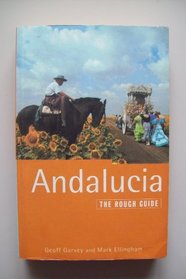Search -
Andalucia: The Rough Guide, First Edition (Rough Guides)
Andalucia The Rough Guide First Edition - Rough Guides
Author:
INTRODUCTION: Andalucía is the southernmost territory of Spain and the part of the Iberian peninsula that is most quintessentially Spanish. The popular image of Spain as a land of bullfights, flamenco, sherry and ruined castles derives from this spectacularly beautiful region. The influences that have washed over Andalucía since the first pain... more »
Author:
INTRODUCTION: Andalucía is the southernmost territory of Spain and the part of the Iberian peninsula that is most quintessentially Spanish. The popular image of Spain as a land of bullfights, flamenco, sherry and ruined castles derives from this spectacularly beautiful region. The influences that have washed over Andalucía since the first pain... more »
ISBN-13: 9781858280943
ISBN-10: 185828094X
Publication Date: 9/1/1994
Pages: 256
Rating: ?
ISBN-10: 185828094X
Publication Date: 9/1/1994
Pages: 256
Rating: ?
0 stars, based on 0 rating
Genres:
- Reference
- Travel >> Europe >> Spain >> Andalusia
- Travel >> Reference >> Guidebooks
- Travel >> Reference >> Reference
- Travel >> Guidebook Series >> Rough Guide




